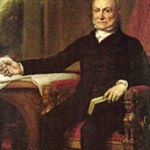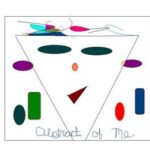If someone was to ask you to paint your soul, what would it look like? How would you begin? Is there any painting out there that reminds you of everything you want to say, be or feel? There is for me. It is the wonderful 1950 abstract expressionist painting of Jackson Pollack.
Abstract expressionism was an American painting movement which began in the late 1940s. The world had just emerged from two world wars alive, but terribly scarred and battle worn. Loving parents had lost their sons, wives their husbands and children, their fathers. Men had revealed to the world how terribly ugly human nature could be and the sight of that ugliness made mankind sick. So when it came to art, the beautiful dreamy Impressionist scenes of Pierre Auguste Renoir’s life portraits, the tranquilly peaceful landscapes of Claude Monet and the twirling ballerinas of Edgar Degas just couldn’t stir hearts like they used to. In a way, the world’s innocence and naivety had been violently stripped away, like a maiden ravished in an open field. Fauvism, with its deep, bold colors was too strong, too aggressive. And Cubism was simply not soothing enough. The world needed art that summed up all its fears and emotions without forcing it to vividly relive the horrors of the battlefields of Europe and the South Pacific. Abstract Expressionism answered that need.
Abstract Expressionism is a style of painting wherein the painter is free to burst free of reality as we see it everyday before our eyes. The painter allows his or herself to transcend this world, this reality, and float away into another world where anything is possible. It is this infinite possibility that enables both the painter and his audience to express everything that they want to express but are unable to find the words or actions. The beauty of abstract expressionist painting is that one can see both everything and nothing at the same time, feel everything and nothing at the same time. It draws its audience in, mesmerizing them, giving them a chance to exhale, to breathe a sigh of relief. Abstract expressionist art wraps its audience in a soft, white blanket of cool emotion and says, “It’s okay. You can relax and be calm.”
Abstract expressionist paintings allowed grieving mothers and fathers, wives and other relations to reach out and connect with their deceased loved ones, something only possible in the abstract world. It allowed people to say everything they so desperately needed to say. It allowed them to take all those jumbled up emotions and come face to face with them on the surface of a canvas. It allowed people, the world, to heal.
Today, when I look at Jackson Pollack’s Number 1, 1950 (Lavender Mist), I see myself . I see my thoughts, my hopes, my dreams, my past, my present and my future. I see all the tears I’ve ever cried, all the times I’ve laughed hysterically and every moment I’ve passed in quiet reflection. I see everything in a way that’s otherwise impossible. I can’t explain it. But somehow, I see all of me.







